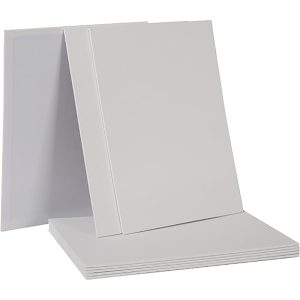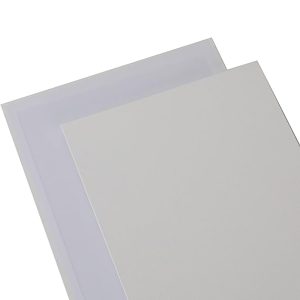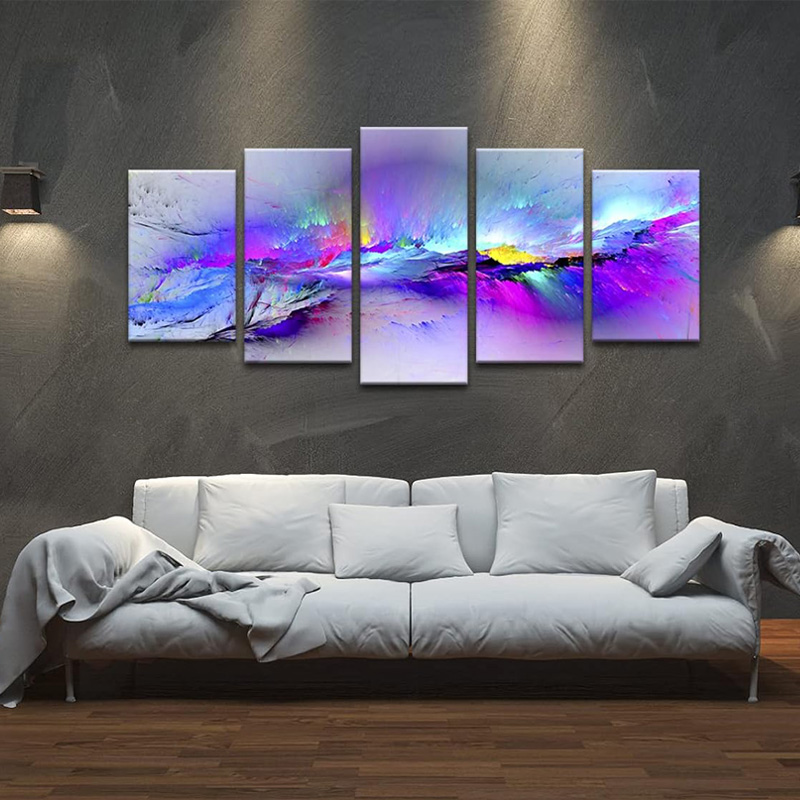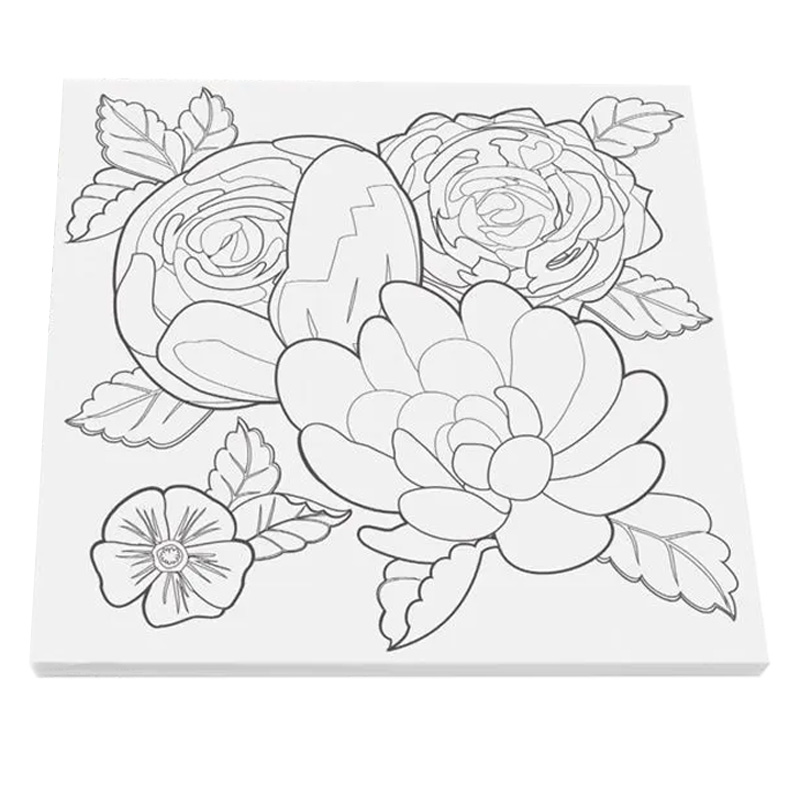Blank white canvas boards are a staple in the world of art, offering an ideal surface for painting, drawing, and other creative endeavors. Whether you’re a beginner exploring your artistic potential or a professional artist creating your next masterpiece, the versatility and quality of a blank white canvas board are unmatched. In this ultimate guide, we will explore everything you need to know about it, including their types, uses, benefits, and tips for choosing the right one for your artistic needs.
What is a Blank White Canvas Board?
A blank white canvas board is a sturdy, flat surface made from high-quality canvas fabric that is mounted on a board or hard backing. The canvas is typically primed with a layer of gesso, making it ready for various artistic mediums such as oil paints, acrylics, watercolors, and pastels. The key advantage of using canvas boards over traditional stretched canvases is their rigidity, which makes them less prone to warping and easier to transport.
Types of Blank White Canvas Boards
They come in a variety of types, each designed to suit different artistic techniques and preferences. The most common types include:
1. Cotton Canvas Boards
Cotton canvas boards are the most common and affordable option for artists. Made from cotton fibers, these canvas boards are lightweight and provide a smooth texture that works well with both acrylic and oil paints. They offer good absorbency and can be primed with gesso to prepare the surface for painting.
2. Linen Canvas Boards
Linen canvas boards are made from linen fibers, which are more durable and have a finer texture compared to cotton. They are often preferred by professional artists due to their superior quality and longevity. Linen canvas boards are ideal for intricate, detailed work and provide excellent adhesion for oil paints and other mediums.
3. Board-Supported Canvas
This type of canvas board is made by attaching a canvas fabric to a rigid backing, such as wood or MDF (medium-density fiberboard). Board-supported canvas offers enhanced stability and durability, making it suitable for heavy applications like large-scale oil paintings or mixed-media projects.
Gesso and Priming
The canvas material used in blank white canvas boards is typically pre-primed with gesso, a white paint mixture that helps create a smooth surface for painting. Gesso seals the canvas and provides a barrier between the paint and the fabric, preventing the paint from soaking into the fibers and ensuring the longevity of the artwork. While many canvas boards come pre-primed, artists can also apply additional layers of gesso for a smoother finish or to adjust the texture according to their preferences.

Benefits of Using Blank White Canvas Boards
Blank white canvas boards offer several benefits that make them a popular choice for artists. Let’s explore some of the top advantages:
1. Affordability
Compared to stretched canvases, blank white canvas boards are generally more affordable. This makes them an ideal choice for artists on a budget, as well as for students and beginners who are just starting to experiment with their craft.
2. Portability and Convenience
The rigid nature of canvas boards makes them easy to transport. Whether you’re traveling to a different location to paint or simply storing your work, canvas boards are lightweight and compact, making them much easier to handle than stretched canvases.
3. Stable Surface
Canvas boards provide a stable and flat surface for painting, which can be especially beneficial for detailed or precise work. Unlike stretched canvases, which can sometimes sag or stretch over time, canvas boards maintain their shape, making them ideal for fine art projects that require a consistent surface.
4. No Wrapping Needed
Unlike traditional stretched canvases, blank white canvas boards do not require the time-consuming process of wrapping the canvas around a frame. This allows artists to start their work immediately, saving both time and effort.
5. Versatility for Different Mediums
Canvas boards are versatile and can be used with a variety of mediums, including acrylics, oils, pastels, and even watercolors. This versatility makes them a popular choice for artists who work across different styles and mediums.

How to Choose the Right Blank White Canvas Board
Choosing the right blank white canvas board can significantly impact the outcome of your art. There are several factors to consider when selecting the best canvas board for your project:
1. Size and Shape
Canvas boards come in a range of sizes, from small, 5×7-inch panels to large, 30×40-inch boards. When choosing the size, consider the scale of your artwork and your intended display area. It’s also important to decide whether you want a square, rectangular, or custom-shaped canvas board.
2. Texture
The texture of the canvas can affect the appearance of the final artwork. A smooth canvas board is ideal for detailed, fine-line work and portrait painting, while a rougher texture may be better for landscape paintings or abstract art. Check the product description for information on the texture of the canvas to ensure it aligns with your artistic style.
3. Priming and Quality of Gesso
The quality of the gesso and how well it has been applied to the canvas is essential for ensuring a smooth, durable surface. While most blank white canvas boards come pre-primed, the number of gesso layers and the quality of the priming process can vary. If you’re working with oil paints, ensure that the canvas board is properly primed to prevent paint from sinking into the fabric.
4. Material Composition
As mentioned earlier, blank white canvas boards can be made from cotton or linen, and each material offers distinct benefits. Cotton is more affordable and works well for a variety of painting techniques, while linen offers a finer, more durable texture suitable for professional work. Consider your specific needs when deciding between cotton and linen canvas boards.
5. Board Thickness
The thickness of the board backing affects its rigidity and overall durability. If you’re planning to work with heavy paints or large-scale artworks, choose a thicker, sturdier board to avoid any warping. Thinner boards may be better suited for smaller works or lighter painting techniques.
Tips for Painting on Blank White Canvas Boards
While blank white canvas boards are designed to be easy to use, there are a few tips and techniques that can help you get the best results:
1. Prepare the Surface
Even though many canvas boards come pre-primed, it’s always a good idea to add an extra layer of gesso, especially if you prefer a smoother surface or are working with oils. Sand the surface lightly for a finer texture if necessary.
2. Use the Right Brushes
The texture of the canvas board can affect how your brushes interact with the surface. For rougher textures, use brushes with stiffer bristles to create texture and movement in the paint. For smoother boards, opt for softer brushes to achieve delicate, detailed work.
3. Work in Layers
Whether you’re using acrylics or oils, it’s important to work in layers, starting with thin, transparent layers and gradually building up thicker applications. This technique helps to prevent cracking and ensures a more refined finish.
4. Allow for Drying Time
Be sure to allow adequate drying time between layers, particularly when working with oils. While acrylics dry quickly, oil paints require several hours or even days to fully cure.
Conclusion
Blank white canvas boards are an essential tool for artists of all levels, offering an affordable, versatile, and stable surface for various painting techniques. Whether you’re a professional painter or a hobbyist, these boards provide the durability and quality needed for creating stunning works of art. By understanding the different types of canvas boards, their benefits, and the best practices for using them, you can elevate your artistic endeavors and create lasting masterpieces on a reliable and dependable medium.





